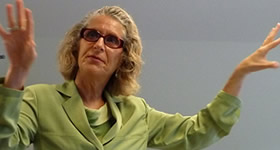1. The donor is at the center. Whatever “moves” the donor to action is the job of the development officer to: identify and respect; protect and preserve; and facilitate its expression and manifestation. [Thanks to Joanne from Albany. How brilliant!]
2. Fundraising is not about funding your agency. It’s about realizing the donor’s dreams and needs. [Thanks to Tom, sitting in his office upstairs. Or maybe he’s out gardening now.]
3. You know how important good writing is for fundraising. You know that we need good stories and rich details. And being different is pretty important, too. Read Benson’s obituary in The Economist (08-15-09 issue). Benson was England’s best-loved fish. She died on July 29, at the estimated age of 25 years. The article is great. Marilyn Monroe and Raquel Welch are included. So is Benson’s weight (64 pounds at one point). And pouting and hookings and more. Do you tell stories like this?
4. You know those cute names we stick on our gift clubs? Like “friend” and “supporter” and “investor” and and… Here’s something I just saw in Mother Jones magazine. “Our donor levels are called Hellraisers and Muckrackers. Sure beats Gold and Platinum, no?” Hellraisers and Muckrackers. Because the the original Mother Jones (Mary Harris “Mother” Jones) was an activist. If you’re gonna name your gift levels, try something that matches your values, reflects your mission, makes you different!
5. Is this really the central premise of American philanthropy: “that it is and should turn into a profession? A question asked by William A. Schambra in his recent piece in The Chronicle of Philanthropy. Good question. What makes something a profession? Research. Documented body of knowledge. Ethical code. Certification. Certification like CFRE or FAHP or ACFRE. Certification is different than an academic degree, by the way.
I think that fundraising is a profession – and it should be. However, I respect Schambra’s concern that we may be claiming that only professionals can participate. Too often, we exclude volunteers. (And, too often volunteers proclaim knowledge they don’t have and compromise effective fundraising.) So it’s a balance. Here’s how Schambra ends his piece:
“Perhaps charity in general must always arise from and ultimately return to this sort of direct, face-to-face encounter with human brokenness and need, and the connection it builds across the most impenetrable of barriers.
“Perhaps the elaborate institutional edifice of modern philanthropy ultimately rests upon this most personal and intimate of human bonds.
“…Philanthropy can pause long enough to consider that, in its determined and single-minded drive toward professionalization, it may in fact be systematically cutting itself off from its own deepest wellsprings.”
I’m so impressed with the University of Pittsburgh. As reported by The Chronicle on line yesterday: The university has turned down a bequest from the estate of George Sodini, the man who killed three and wounded nine others earlier this month. It turns out that Mr. Sodini was a graduate of the university – and bequeathed his entire estate to the university. Here’s what the university said: “We believe that any available funds should benefit Mr. Sodini’s victims and members of their families.”

